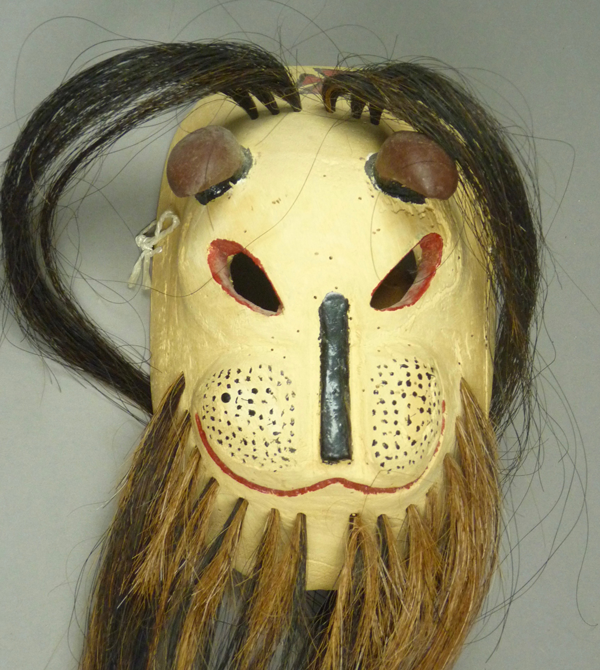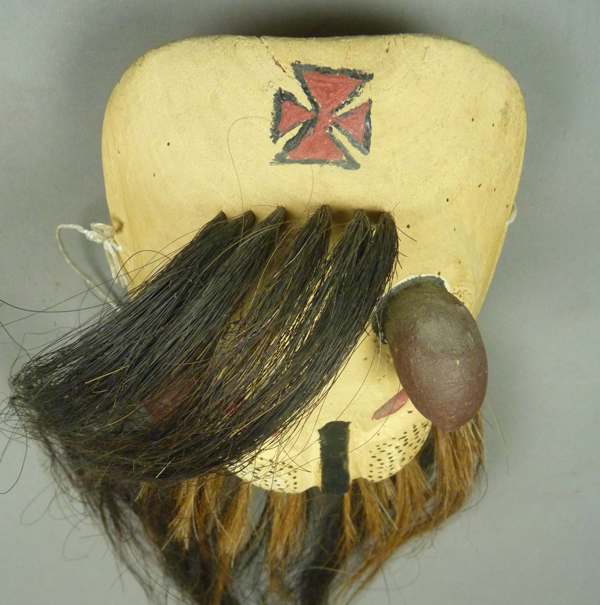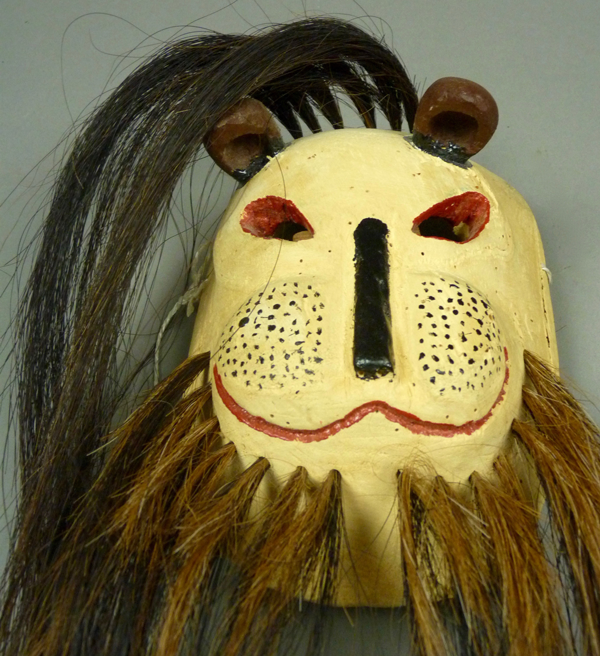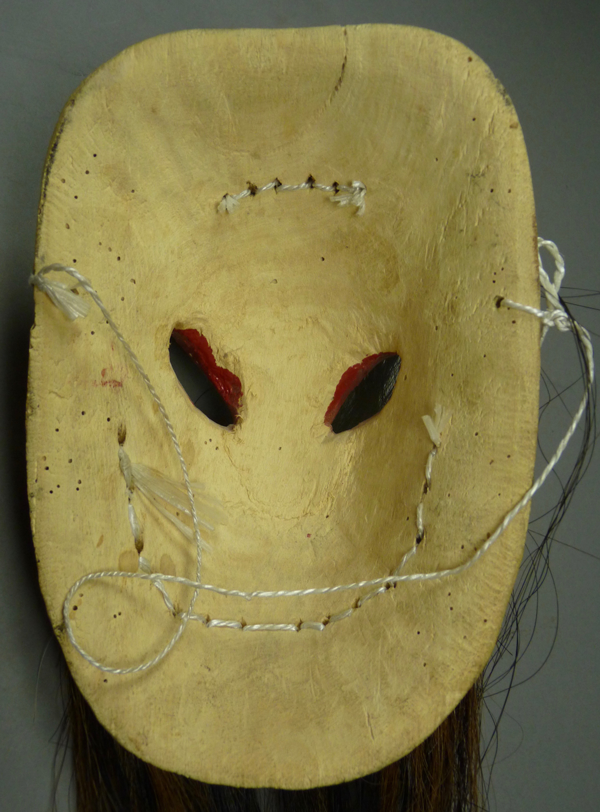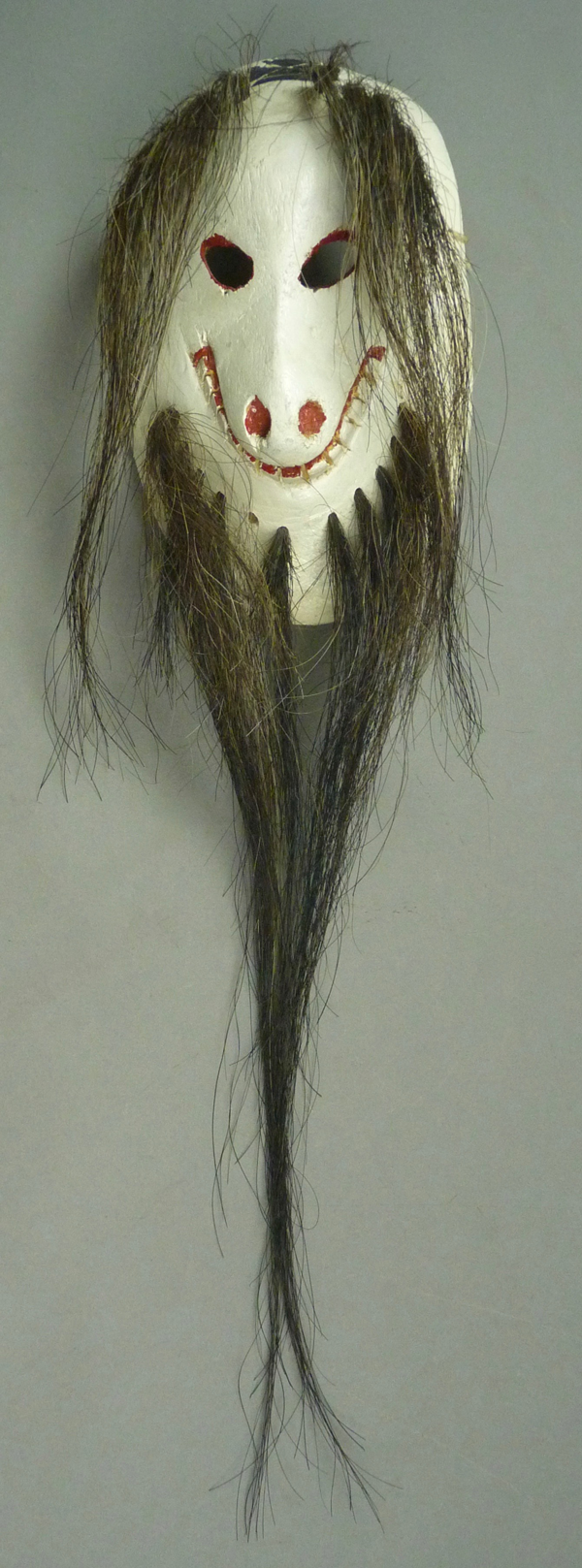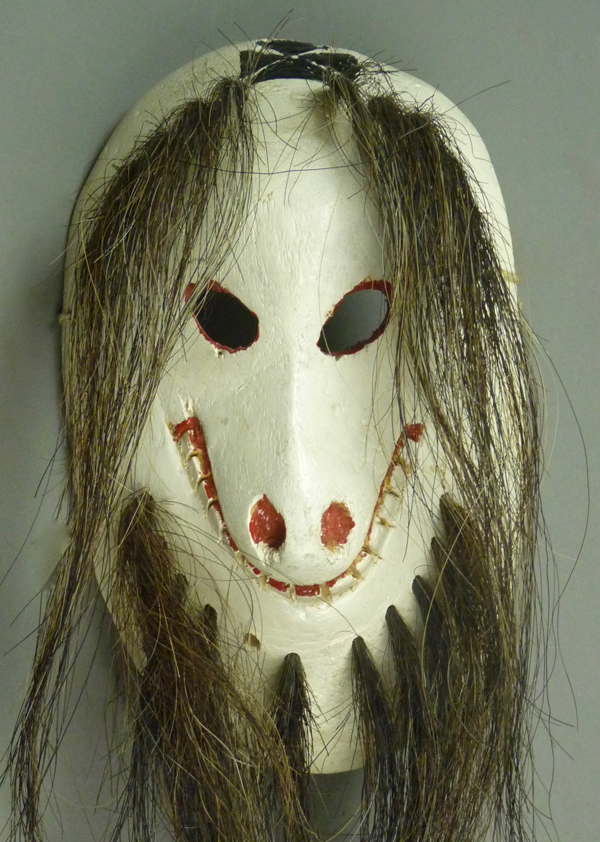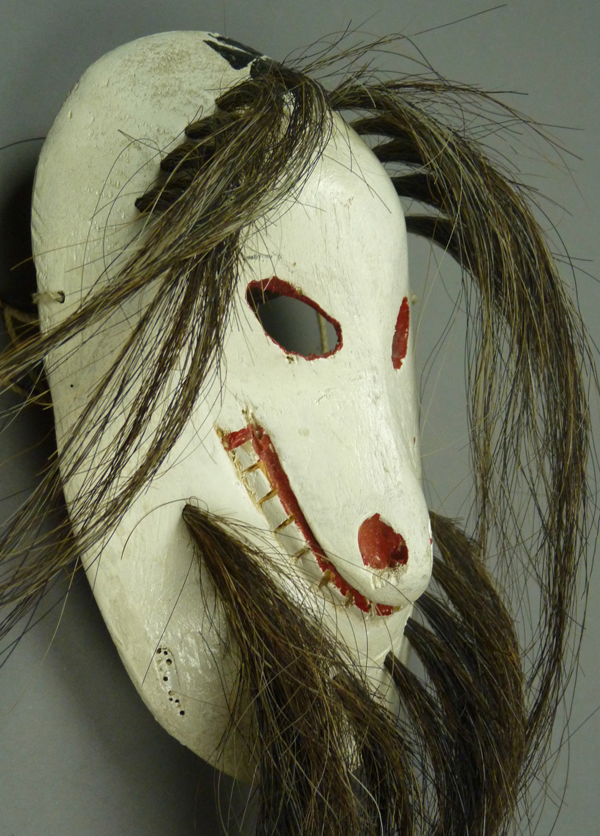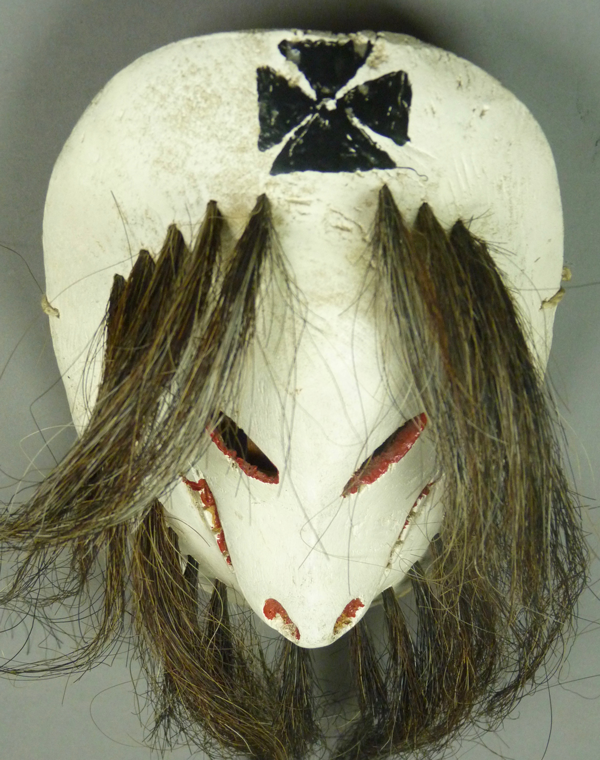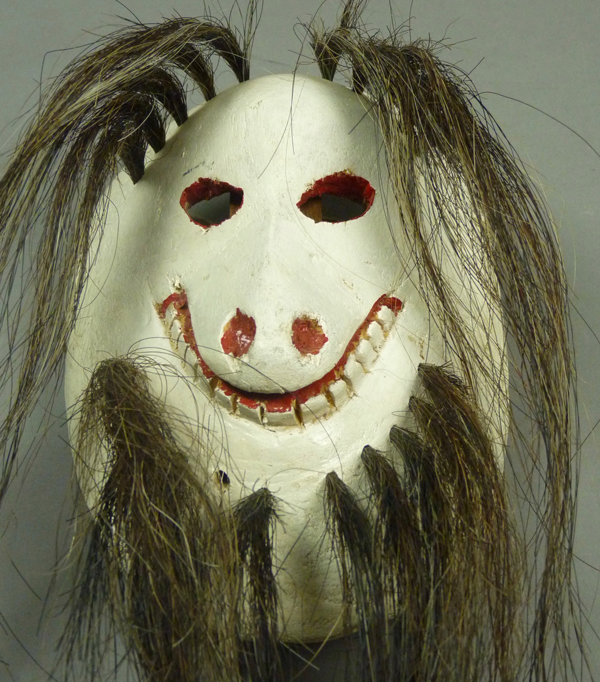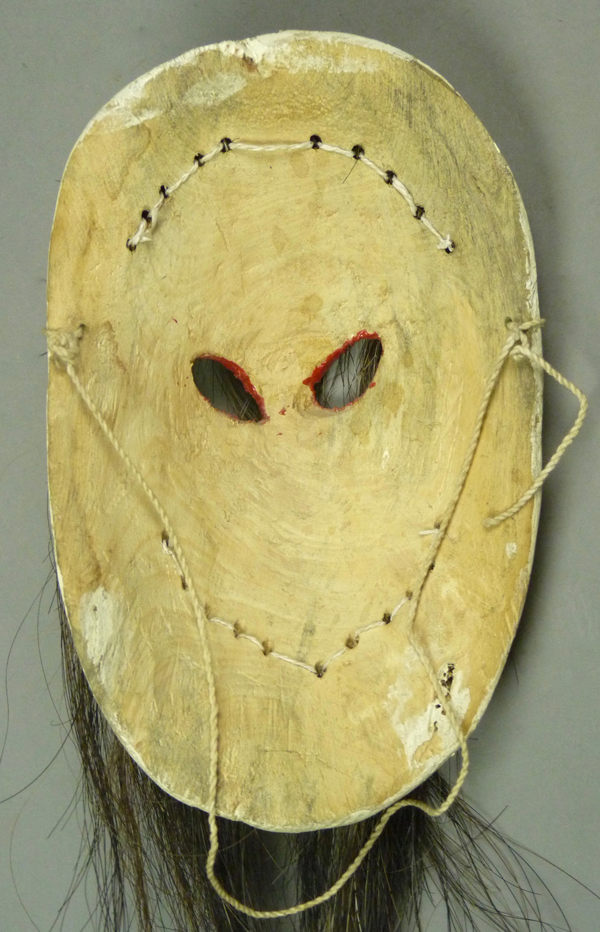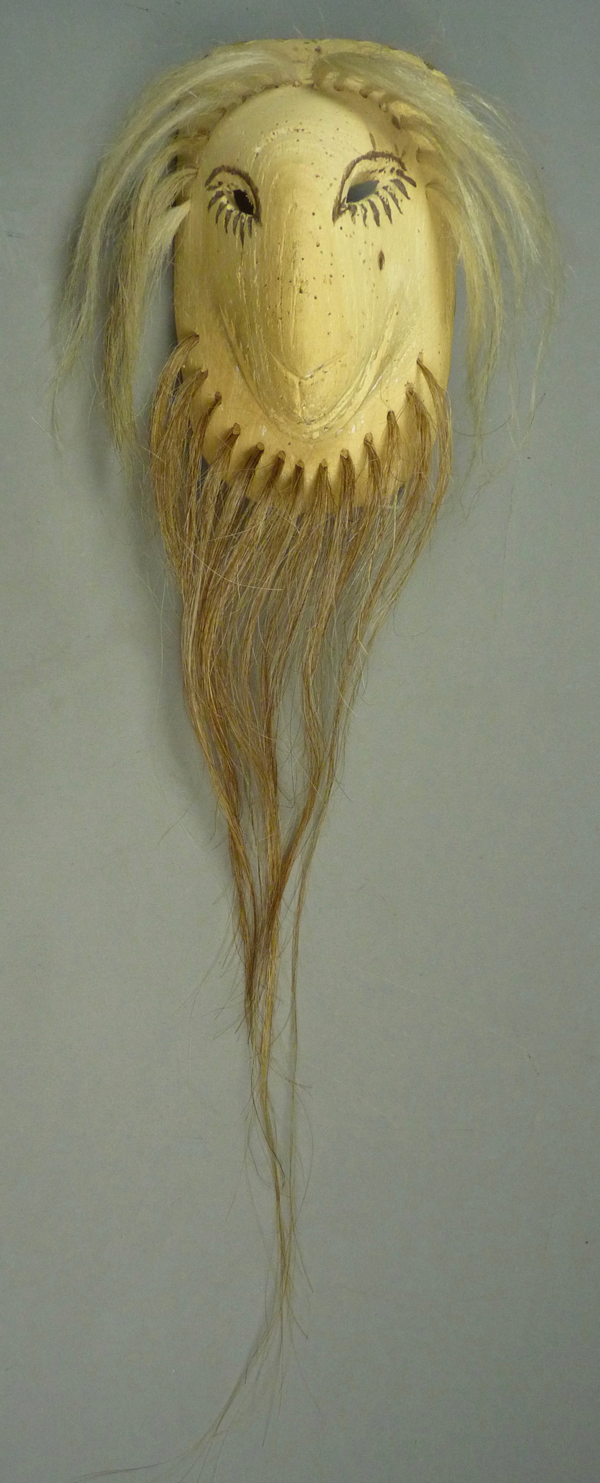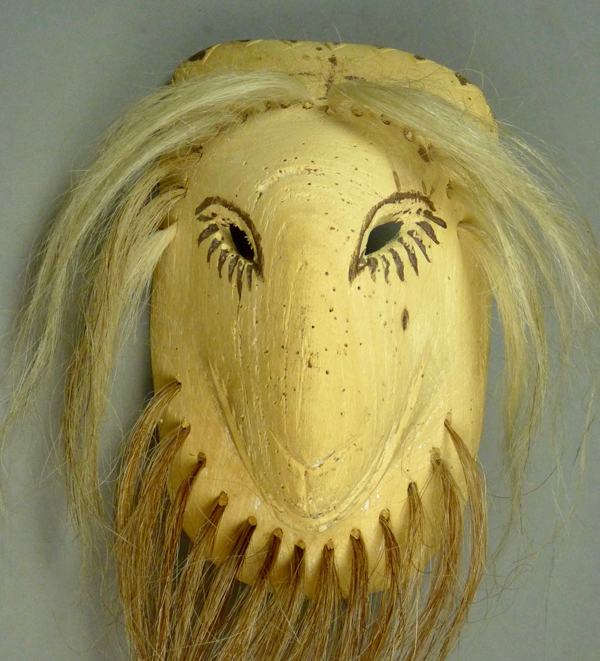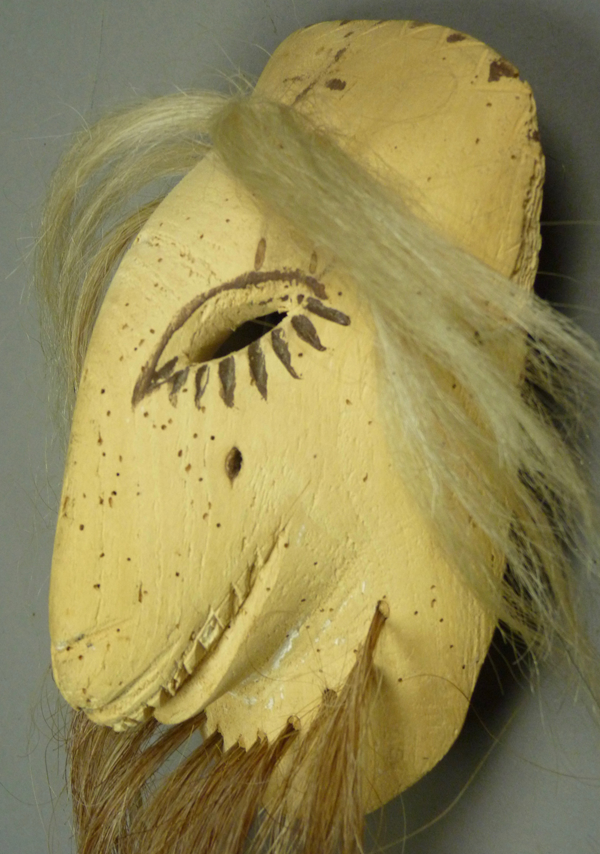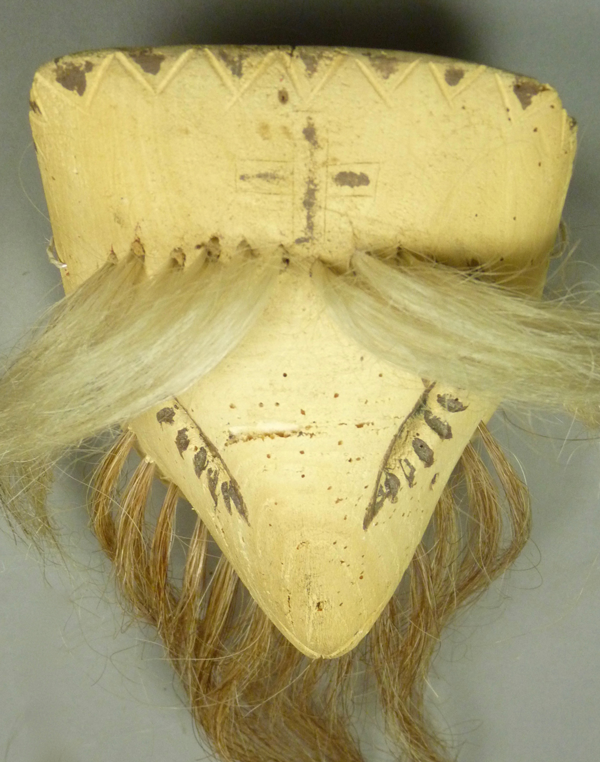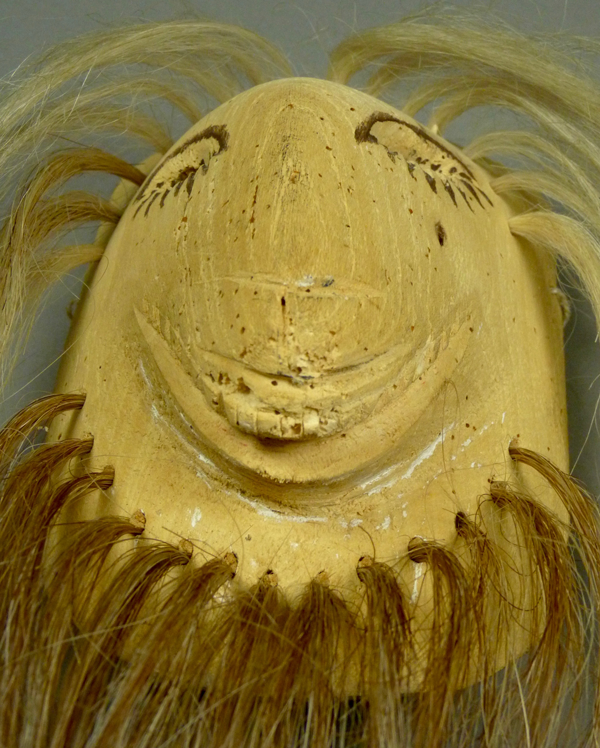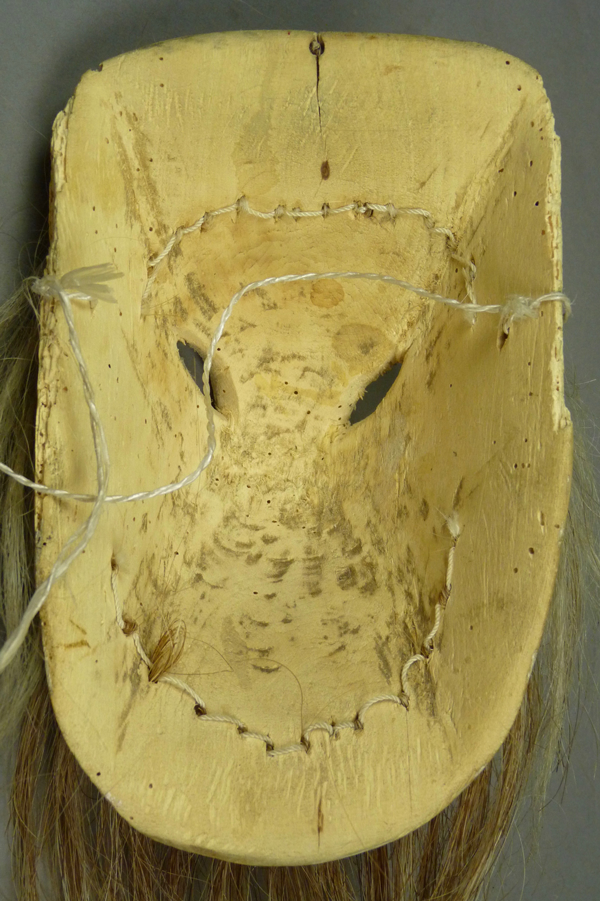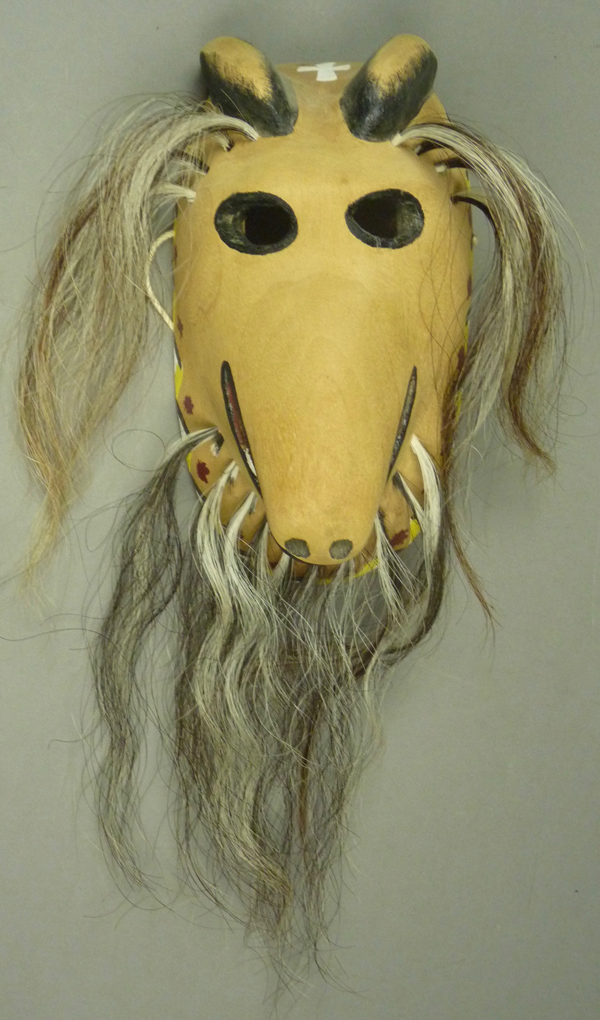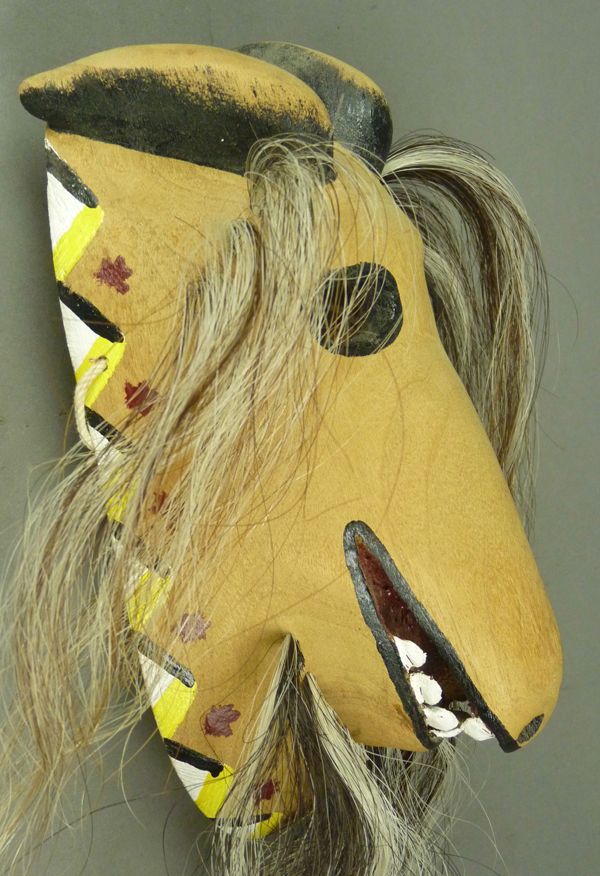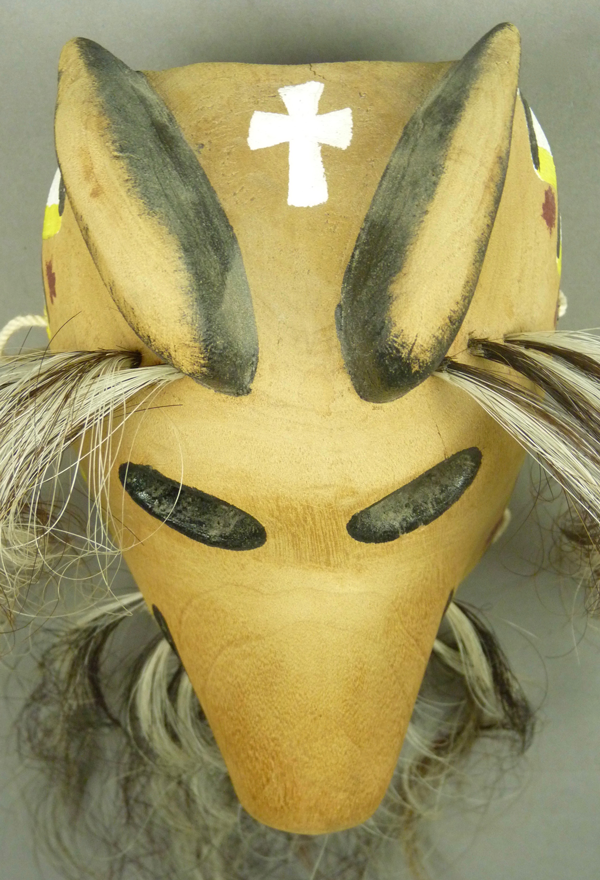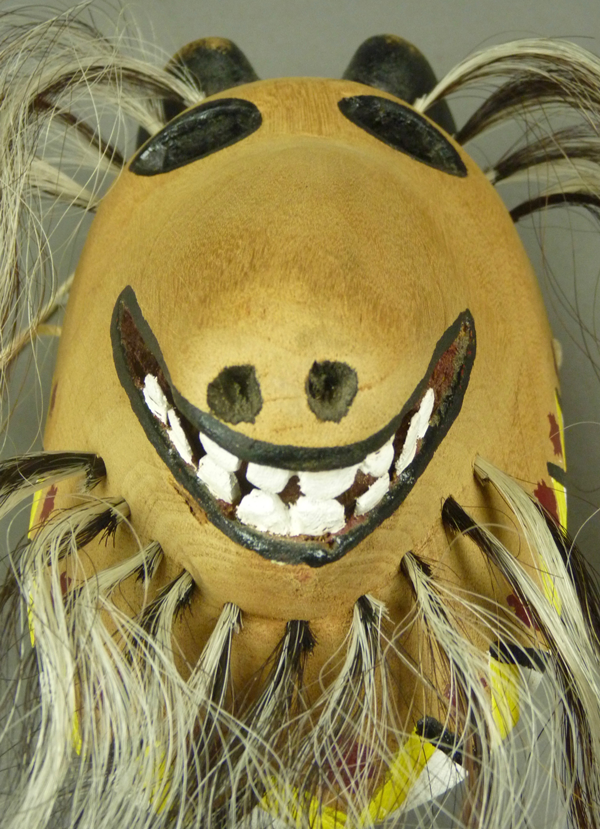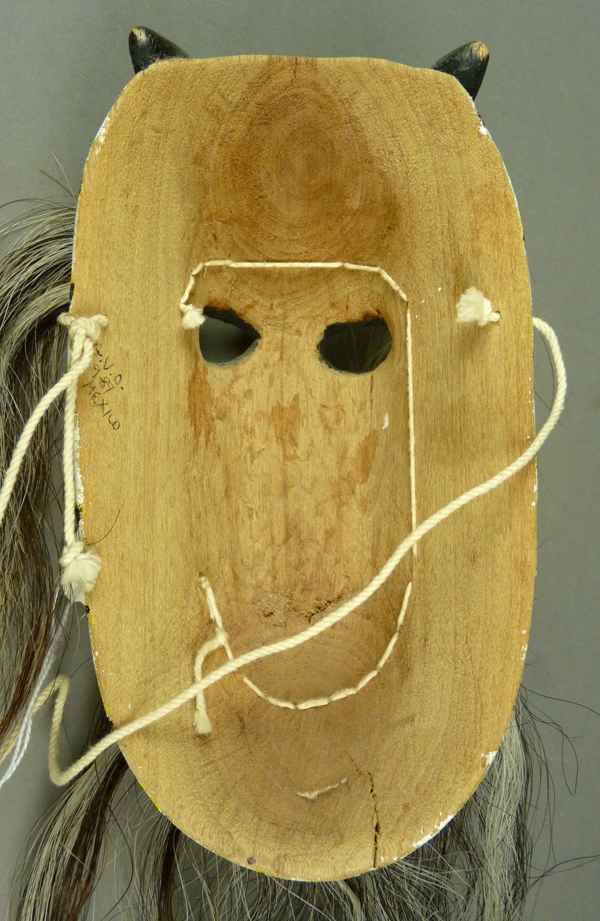In 1994 I purchased a trio of Sinaloa Pascola masks from my friend Tom Kolaz. They had been collected together, but none had an identified carver. Two had the faces of goats, and the third, with a feline face, was said to represent a Leon (Mountain Lion). Looking at them now, I believe that the Lion and one of the Goats were carved by Guadalupe Vadon Ochoa, this week’s featured carver, while the third was the work of another highly familiar hand, that of Pablo Pacheco. I was very pleased to obtain these three then anonymous masks, not only because masks from Sinaloa are not commonly available on the market, but also because the Mountain Lion is an unusual subject for a Pascola mask, and the goat by Guadalupe is particularly charming. The Mountain Lion does explicitly appear in Yaqui Deer songs and is then portrayed in dance performance by Yaqui Pascola dancers. I assume that mountain lions also appear in Mayo Pascola dancing, although I have not found a specific reference for this in the Mayo dance literature. In the Unites States we call the Mountain Lion by various additional names—such as Cougar, Panther, Puma, and Catamount.
Here is the Mountain Lion Pascola mask.
The ears on this mask are very similar in style to the horns on an identified mask that appears later in this post.
The black nasal ridge is carved in relief.
At some point, perhaps even before the mask was carved, the wood was mildly infested with boring insects.
There is a simple painted Maltese cross on the forehead.
This mask is 8¼ inches tall, 5 3/8 inches wide, and 2½ inches deep.
The back has mild staining, as if from limited use.
Here is the Goat Pascola mask from this trio that I am also attributing to Guadalupe.
The forehead cross, eye design, and back all resemble the first mask and the one that ends this post.
I particularly like the toothy mouth of this mask.
We see another plain painted Maltese cross.
This mask is 8 inches tall, 5 inches wide, and 2 inches deep.
This back too has mild staining from use.
And here is the third mask from this threesome, with telltale design details to mark it as the work of Pablo Pacheco. This mask had originally been painted white, but with water based paint that has worn away, leaving traces of white in the cracks. You can see more of Pablos’s masks in my posts of June 17, June 24, and July 1, 2019.
It was very common for Pablo’s masks to be carved from wood that had been infested with insects.
Those are carved lines under the eyes, a feature that positively identifies Pablo’s masks, when present. More often than not, he simply painted those lines without carving.
There is a carved rim design across the top of the mask, and the forehead cross is outlined with carved lines.
Both the brow and chin hair bundles are pegged.
This mask is 7½ inches tall, 4½ inches wide, and 3 inches deep.
The back of this mask is also mildly stained from use. The upper edges of the back of this mask show mild damage from insect infestation.
In 1998 I purchased a Sinaloa Pascola mask from Tom Kolaz that had been explicitly identified at the time of collection as the work of Guadalupe Vadon Ochoa of Rincon de Aliso, Sinaloa. This is obviously a Goat Pascola mask, with relief carved horns. This mask became my reference point for the identification of the first two masks.
The carving is good, the surface is carefully smoothed, while the painting is very simple. From a functional point of view, this is an excellent Pascola mask. Now you can probably see how obvious the similarity is between the horns of this goat and the ears of the mountain lion.
There is a simple freehand painted cross on the forehead.
The rim design was also painted freehand.
The hair bundles were carefully tied in place.
This mask is 8¼ inches tall, 4½ inches wide, and 3½ inches deep.
The notation on the back of this mask identifies it as having been collected by Barney Burns and Mahina Drees from G.V.O. in September, 1987. The back doesn’t appear to have been danced.
Next week I will show later masks by Guadalupe Vadon Ochoa.
Bryan Stevens


